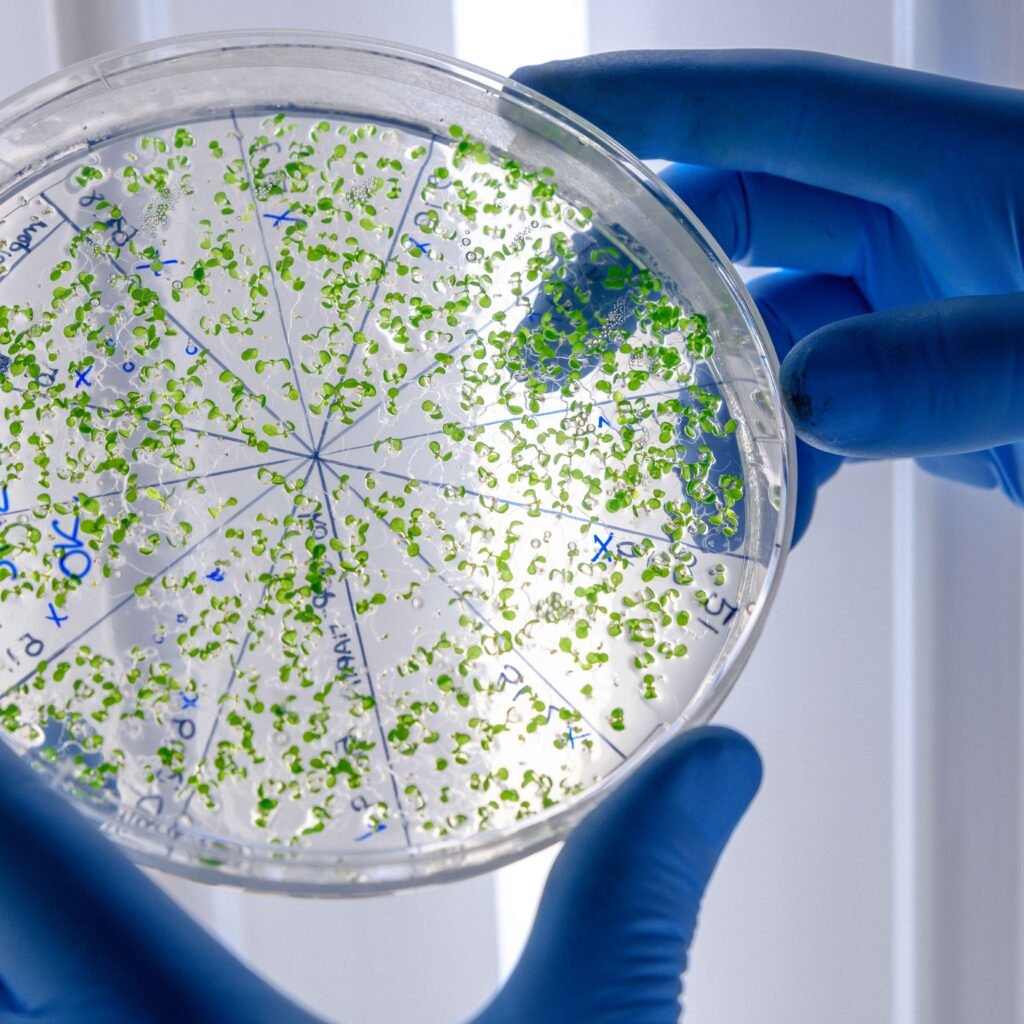Written by: Utkarsha Patil (M.Pharm, Pharmacology)

The growing threat of antimicrobial resistance (AMR) strengthens the urgent need to search for novel therapeutic agents. Amid this growing worry, a promising new antibiotic known as Saarvienin A has surfaced. Saarvienin A was isolated from a rare environmental actinomycete Amycolatopsis species.
Saarvienin A was identified by an international research team led by scientists from the University of Vienna and the Helmholtz Institute for Pharmaceutical Research Saarland (HIPS). The antibiotic was isolated from a strain of Amycolatopsis sp. YIM10, a soil-dwelling actinobacterium collected from a rare earth mine in China. Amycolatopsis is known for producing clinically important antibiotics like vancomycin.
Saarvienin A has attracted significant scientific interest due to its potent activity against multidrug-resistant infections. It is thought that Saarvienin A operates by a new mechanism due to its unique structure, which does not resemble any other glycopeptides, including vancomycin. This uniqueness will be the factor that works against drug-resistant bacteria, particularly against Staphylococcus aureus, especially methicillin-resistant strains (MRSA), making it a convincing candidate in the fight against resistant pathogens.
A Unique Habitat
The rare earth mining environment of Southern China is harsh, mineral-rich, and has biologically unique conditions that challenge microbial life and promote the production of uncommon secondary metabolites. During a targeted bioprospecting journey, researchers collected soil samples from this ecosystem. After doing an extensive analysis of this sample, scientists isolated Amycolatopsis sp. YIM10, a previously uncultured strain of actinobacteria.
This strain belonged to the prolific genus Amycolatopsis, known for producing the clinically important rifamycin antibiotics. Still, YIM10 was distinctive because scientists discovered something unusual harbored by this species: biosynthetic gene cluster (BGCs) that encodes previously unexplored compounds.
Saarvienin A
Amycolatopsis sp. YIM10 having rich reservoir of biosynthetic gene clusters (BGCs). Scientist discovered only few secondary metabolites identified in fermentation broth or via genome mining and all of these metabolites had no or very weak antimicrobial activity. However, some culture extracts showed a significant antimicrobial effect. Further fractionation of these extracts identified a new glycopeptide, which they named it Saarvienin A, to recognize and show appreciation for Saarland, Germany, where part of the research was conducted.
Detailed NMR and mass spectrometry analyses revealed that the compound features a pentasugar/aminosugar chain attached to a halogenated peptide core, with three of its four amino acids forming a macrocyclic structure via a urea-type carbonyl linkage. A SciFinder structural similarity search identified vancomycin derivatives as the closest known compounds, even though they are structurally distinct. This suggests that the compound referred to as saarvienin A represents a novel class of glycopeptides. It can distinguish by its ability to overcome vancomycin resistance and exhibit selective antibacterial activity against Gram-positive pathogens.
The spectrum of activity
The in vitro antibacterial activity of Saarvienin A was evaluated against a range of Gram-positive and Gram-negative pathogens. It exhibited potent activity against Gram-positive bacteria, including vancomycin-resistant enterococci (VRE), methicillin-resistant and vancomycin-intermediate Staphylococcus aureus (MRSA/VISA), and Daptomycin-resistant S. aureus (DRSA).
Saarvienin A showed minimum inhibitory concentrations (MICs) of 1 µg/mL against Enterococcus faecalis (vanB-positive) and Enterococcus faecium (vanA-positive), significantly surpassing the efficacy of vancomycin. It also demonstrated low MICs against MRSA/VISA and DRSA strains. Saarvienin A showed moderate activity against Mycobacterium smegmatis but was less effective against Mycobacterium tuberculosis.
In contrast, it lacked activity against Gram-negative bacteria, including Klebsiella pneumoniae, Escherichia coli, Salmonella enterica, and Pseudomonas aeruginosa. This lack of efficacy is likely due to its inability to penetrate the outer membrane barrier of Gram-negative organisms.
Mechanism of Action
In the initial discovery and characterization studies, researchers identified its strong antibacterial activity especially against Gram-positive, drug-resistant pathogens but did not yet determine the precise molecular target or how it exerts its antibacterial effect. However, some early evidence suggests that Saarvienin A may represent a new class of glycopeptides-like compounds, structurally distinct from existing antibiotics such as vancomycin. Because it shows activity against vancomycin-resistant and daptomycin-resistant strains, it likely acts through a novel or modified mechanism, different from known glycopeptides antibiotics.
Safety
The cytotoxicity of Saarvienin A was evaluated using the HepG2 human liver carcinoma cell line, revealing an IC₅₀ of 13 µg/mL, This suggests a potential therapeutic window. The observed cytotoxic effects highlight the need for further structural optimization to improve selectivity and minimize toxicity, despite the compound’s promising antibacterial activity.
Implications and Conclusion
The discovery of Saarvienin A represents a significant milestone in the ongoing battle against antimicrobial resistance, especially among Gram-positive pathogens. Isolated from Amycolatopsis sp. YIM10, a strain collected from a rare earth mine in China. These novel glycopeptides show potent antibacterial activity against vancomycin-resistant and daptomycin-resistant strains, including VRE and MRSA/VISA.
Saarvienin A’s novel structure and potential mechanism of action, suggesting it could form the basis of a new class of glycopeptides. Despite its promising activity, particularly against drug-resistant Gram-positive bacteria, its limited effect on Gram-negative pathogens and observed cytotoxicity underscore the need for further structural optimization and preclinical evaluation.
The findings highlight the potential of extreme and underexplored ecosystems, such as rare earth mining environments, in yielding unique microbial metabolites with therapeutic potential. As resistance to existing antibiotics continues to rise, Saarvienin A serves as a gripping lead compound for the development of next-generation antibiotics capable of overcoming established resistance mechanisms.
References
Amninder Kaur, Jaime Felipe Guerrero-Garzón, Sari Rasheed, et al, Saarvienin A—A Novel Glycopeptide with Potent Activity against Drug-Resistant Bacteria, Angew. Chem. Int. Ed. 2025, e202425588, doi.org/10.1002/anie.202425588
Liu L, Liu Y, Liu S, Nikandrova, et al, (2023) Bioprospecting for the soil-derived actinobacteria and bioactive secondary metabolites on the Western Qinghai-Tibet Plateau. Front. Microbiol. 14:1247001. doi: 10.3389/fmicb.2023.1247001
Scientists discover first “Saar-drug“, Saarvienin A shows promising properties for combating resistant hospital germs, Helmholtz Centre for Infection Research, https://www.helmholtz-hzi.de/en/media-center/newsroom/news-detail/scientists-discover-first-saar-drug/
Li T, Yu X, Li M, Rong L, Xiao X, Zou X. Ecological insight into antibiotic resistome of ion-adsorption rare earth mining soils from south China by metagenomic analysis. Sci Total Environ. 2023 May 10;872:162265. doi: 10.1016/j.scitotenv.2023.162265. Epub 2023 Feb 17. PMID: 36801324.
The article is extensively reviewed and fact-checked by the editorial team of pharmacally.com

